- More sophisticated and better quality than ever before
- Strong EcoBoost and thunderous V8 engines
- Tech features and quality massively upgraded
- More expensive than ever before
- Right-hand drive versions down on power compared to LHD versions
- Limited interior and exterior colour options
The Ford Mustang is one of the most iconic cars the world has ever seen. Originally launched way back in 1964, the original Mustang was the first car to introduce the world to options packages and individualisation, as well as the idea of the affordable V8 muscle car. Seven generations later, the latest ‘S650’ Mustang has launched in Australia armed with a lot more technology, revised dynamics and a higher pricetag to match. Is it the best Mustang yet? We attended the 2025 Ford Mustang launch in South Australia – including the iconic The Bend racetrack – to find out.

While the Mustang is an undeniable American icon, it’s only been sold Australia in factory right-hand drive since 2015. An excellent decision by Ford to sell it in Australia, not only filling the hole left in place by the V8 Falcon but giving Aussies a proper V8 muscle coupe, the Mustang has sold almost 40,000 units locally which is impressive for a relatively niche product in a market that sells so many ute and SUVs annually. But with a gap of almost a year in production and a delay from an initial late 2023 release, Ford dealers are likely keen to have the new model in showrooms once again.
How much does the 2025 Ford Mustang cost to buy?
For 2025, there are three models in the Australian lineup: the entry-level EcoBoost coupe ($66,990 plus on-road costs), mid-spec GT coupe (manual: $78,990 +ORC, auto: $81,990 +ORC) and convertible ($87,667 +ORC). The track-focused Dark Horse coupe (manual: $99,102 +ORC, auto: $103,002 +ORC) was part of the MY24.5 range, but all 1,000 units of it have sold out – but it was still part of the launch.



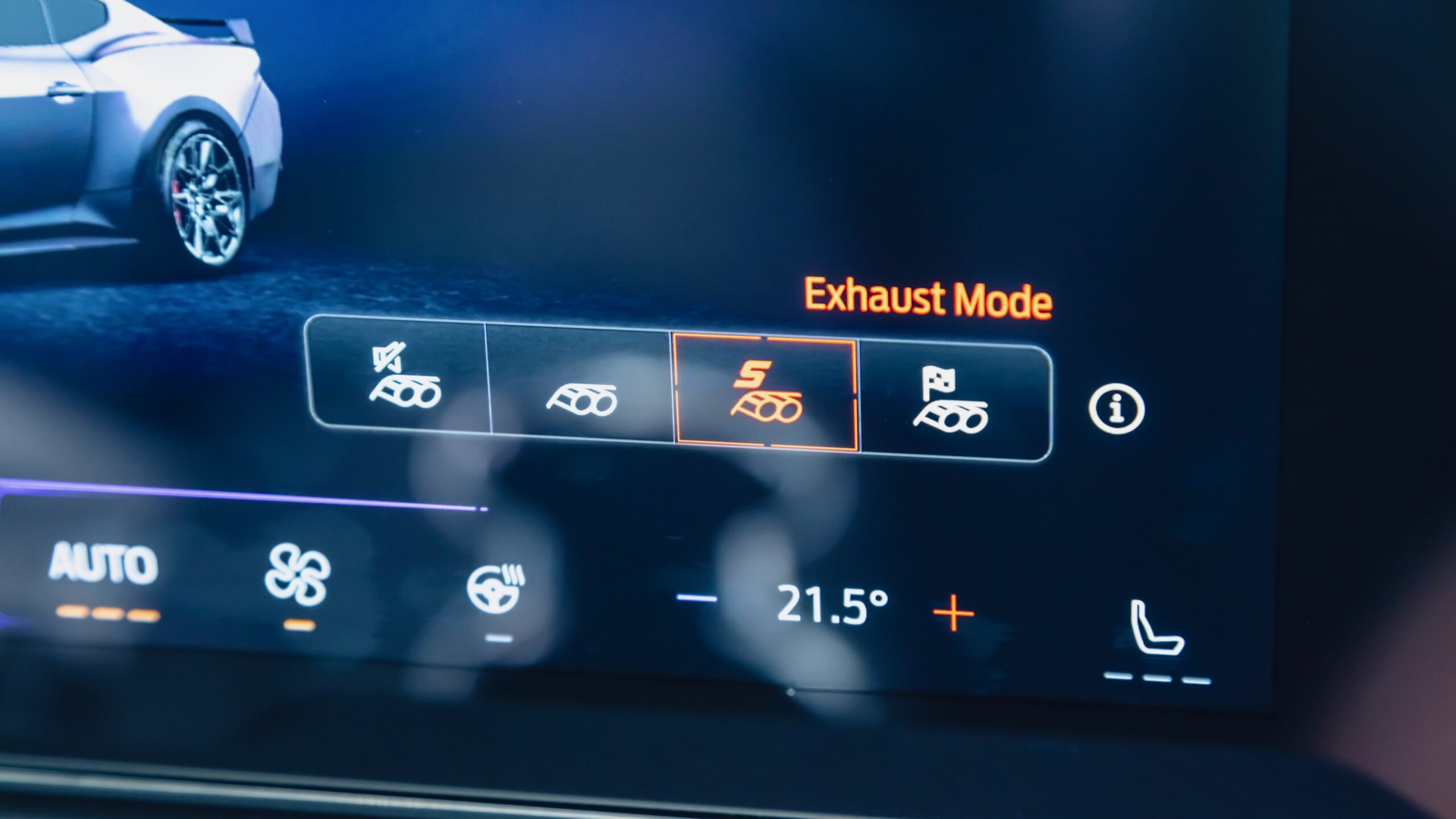
Mustang EcoBoost standard equipment:
- 19-inch alloy wheels
- Brembo six-piston front/four-piston rear brakes
- Active exhaust with quad exhaust tips
- Limited-slip differential
- Dusk- and rain-sensing automatic LED exterior lighting with sequential indicators
- Rain-sensing automatic wipers
- Keyless entry with push button start and remote start
- Heated and electric-folding mirrors with puddle lamps
- Heated leather steering wheel with a leather gear knob and hand brake
- Heated and ventilated front seats with six-way electric adjustment
- Leather upholstery
- 12.4-inch digital driver’s display
- 13.2-inch touchscreen with Ford’s ‘Sync 4’ software and live services
- Wireless Apple CarPlay and Android Auto smartphone mirroring
- AM/FM/DAB+ digital radio
- Satellite navigation with live traffic reporting
- 12-speaker B&O sound system
- Wireless phone charger (to be deleted for MY25 cars)
- 2x USB charging ports (1x USB-A, 1x USB-C)
- Six driving modes (normal, sport, slippery, track, drag strip and custom)
- Track apps (including acceleration timing, brake performance, lap timer, drift brake and line lock plus a shift indicator and rev matching for manual models)
Mustang safety equipment:
- Seven (coupe)/five (convertible) airbags
- Auto emergency braking (AEB) with evasive steering assistance
- Front and rear cross-traffic alert
- Lane keeping assistance with lane departure warning
- Adaptive cruise control (with stop and go functionality for automatic models)
- Adaptive lane guidance (auto only)
- Blind-spot monitoring
- Auto high beam
- Low-speed rear auto braking
- Rear parking sensors
- Reversing camera
The Mustang range is yet to be tested by either ANCAP or Euro NCAP and as such, is not rated for safety.



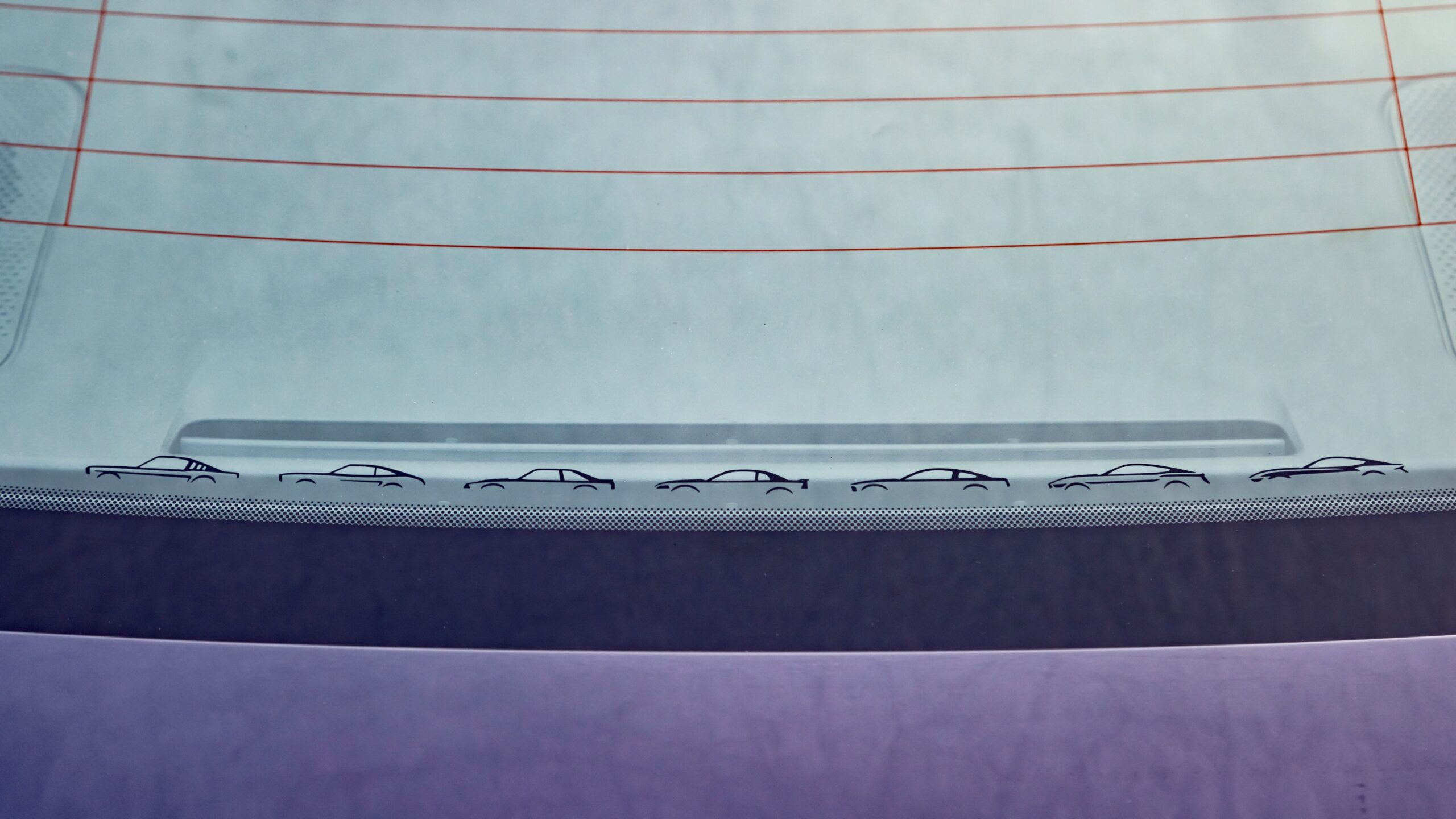
Mustang GT adds:
- GT-specific alloy wheels (wider at the rear)
- GT-specific front grille
- Bonnet vents
Mustang Dark Horse adds:
- Rear spoiler
- MagneRide adaptive suspension
- Black exhaust tips
- Torsen limited-sip differential
- Dark Horse-specific exterior accents




Mustang colour range:
- Oxford White
- Race Red
- Shadow Black (+$700)
- Iconic Silver (+$700)
- Carbonised Grey (+$700)
- Vapour Blue (+$700)
- Molten Magenta (+$700)
- Grabber Blue (+$700)
The colours shown above are for MY25 cars and colours such as ‘Yellow Splash’, ‘Atlas Blue’, ‘Rapid Red’, ‘Dark Matter Grey’ and ‘Blue Ember’ (Dark Horse) shown in these press photos from the Mustang launch are available on stock cars before MY25 cars arrive.
Mustang options:
- Recaro sports seats (without heating or cooling): $2,950 (GT only)
- Magneride adaptive suspension with red brake callipers: $2,950
- Bronze appearance package (bronze exterior detailing): $1,500
- GT appearance package (stripe and high rear spoiler): $1,500 (GT only)
- EcoBoost appearance package (stripe and low rear spoiler): $1,500 (EcoBoost only)
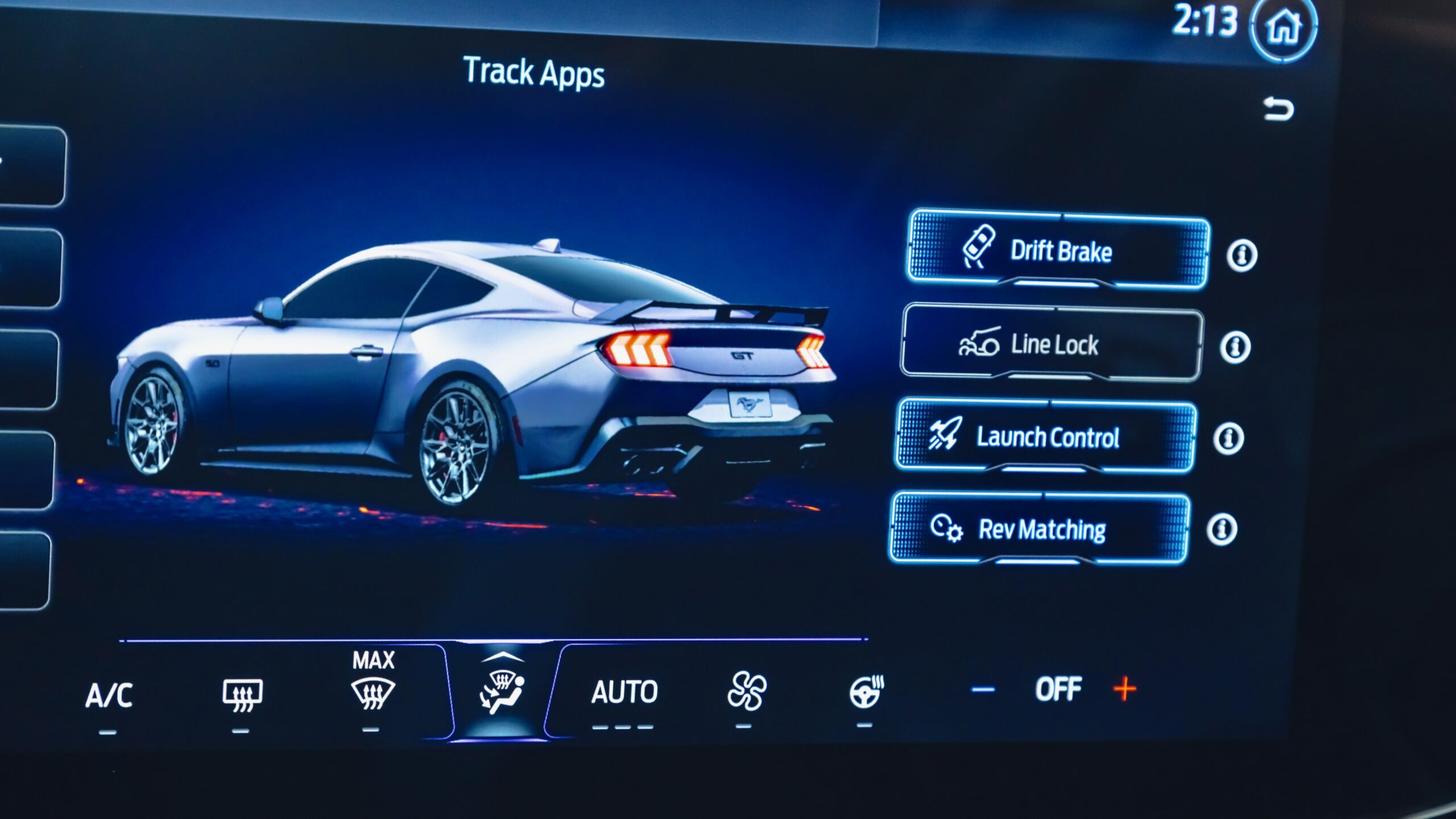

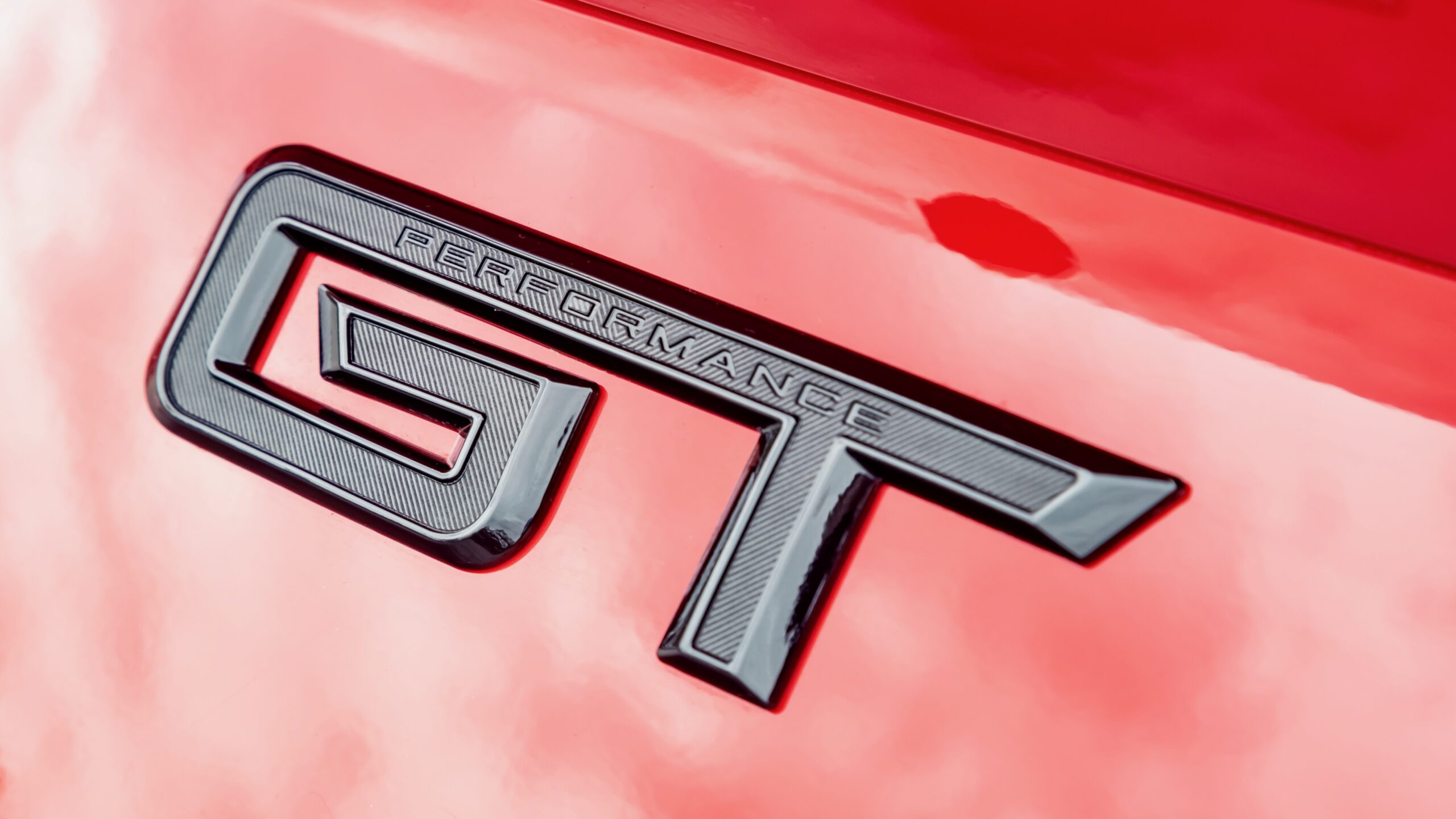

In Australia, the Mustang doesn’t have any main rivals. The closest to its size and performance would be the Toyota GR Supra (from $87,380 +ORC) and Nissan Z ($75,800 +ORC), though those two cars don’t feature a rear seat or a boot as large as the Mustang’s. The Mustang is also better equipped than both rivals, especially with its full safety suite and impressive standard tech equipment. Further emphasising the Mustang’s value equation is that to get similar performance from a European car, you’d be spending significantly more money than the Mustang to get it.
How powerful is the 2025 Ford Mustang?
Under the bonnet of the 2025 Ford Mustang range are two petrol engines, both of which were used in the previous model but upgraded: either a 223kW/475Nm 2.3-litre turbocharged four-cylinder unit in the EcoBoost or a 5.0-litre naturally aspirated V8 in the GT (345kW/550Nm) and Dark Horse (350kW/550Nm). All models are equipped with a 10-speed automatic transmission, while the GT and Dark Horse are also available with a six-speed manual – naturally, power is set to the rear wheels only.




The claimed combined fuel consumption for the 2025 Ford Mustang ranges from 9.4L/100km for the EcoBoost to 12.8L/100km for V8 autos, 13.6L/100km for the GT manual to 15.4L/100km for the Dark Horse manual. CO2 emissions range from 215g/km for the EcoBoost to 353g/km for the Dark Horse manual. All models must use 98RON premium unleaded fuel. On the launch, our drive loops and track use meant that we were unable to get a proper fuel consumption reading and will do so when we have an opportunity to review the Mustang in our normal testing regime.
How fast is the 2025 Ford Mustang?
Even though Australian-spec Mustangs are detuned compared to ones sold in the US – though still more powerful than European models – the S650 is fast. Although Ford doesn’t claim a 0-100km/h time, just under the five second bracket feels about right for the GT, with the Dark Horse even faster. Top speed? Again, Ford doesn’t tell, but the Dark Horse easily hit 240km/h on the main strait at The Bend and another 30-40km/h feels plausible. Not exactly hanging around then, and even better for the price.
The 5.0-litre ‘Coyote’ V8 used in the Mustang GT and Dark Horse is a great engine. It sounds great, it revs quite high – the redline is at 7,500rpm – and did we mention that it sounds fantastic? Refined compared with the same engine in the previous Mustang, the S650 has no trouble getting out of its own way with a V8 – but the 223kW 2.3-litre EcoBoost engine is no slouch either, displaying a bit of turbo lag but once it’s on song, it’s quite rapid. Of course, it doesn’t sound as good as the V8, but it’s still fun.
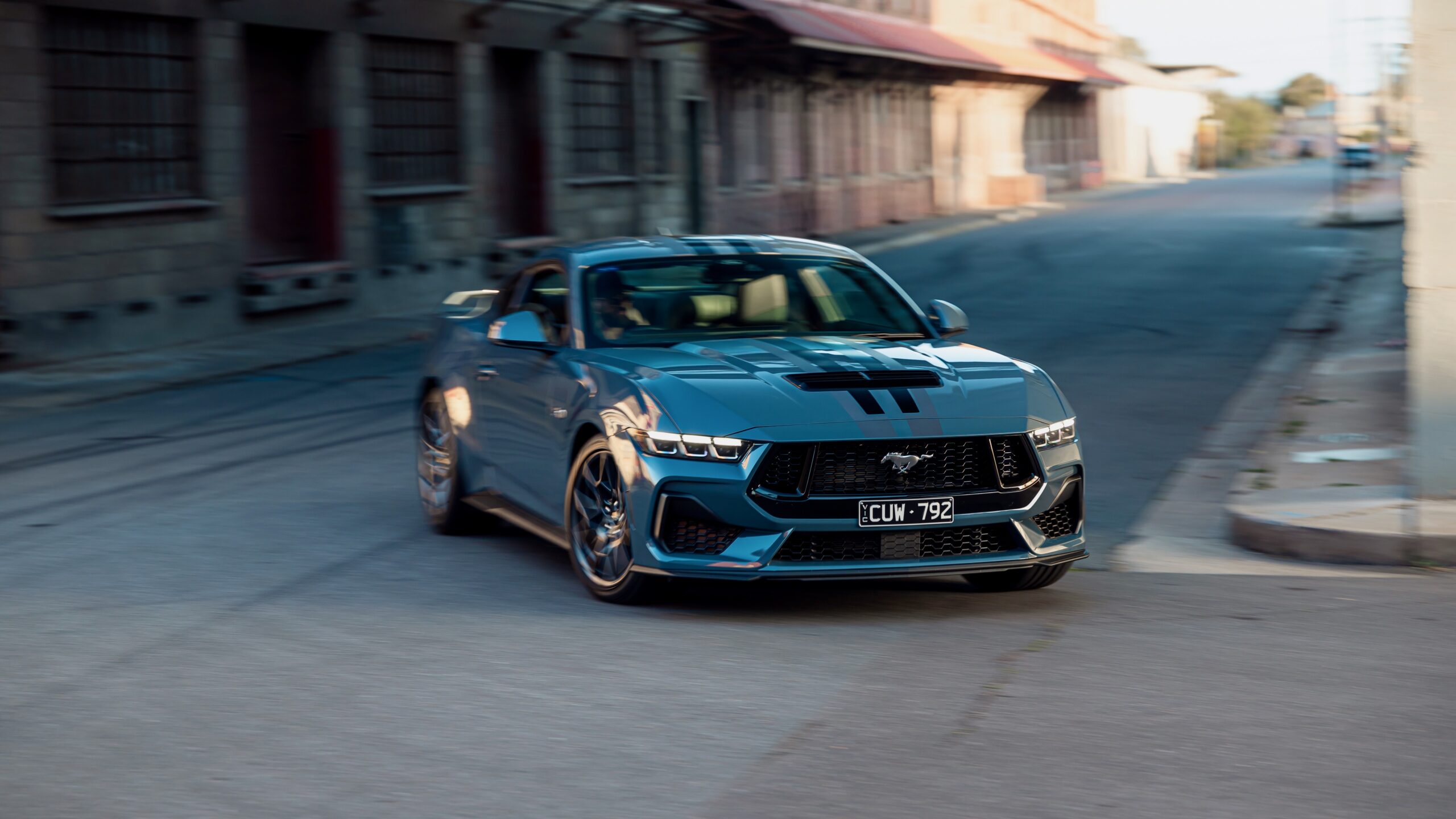



The launch program for the Mustang through the hills above Adelaide and south east down towards The Bend really showed off its strengths in the ride and handling department. As you’d expect for a Mustang, the S650’s cruising ability is superb thanks to its supple ride quality – especially with the MagneRide adaptive dampers – and reasonable noise levels. Put the exhaust into quiet mode and there’s no way you’d be able to tell just how well this new Mustang is able to go around a corner, such is its excellent grand tourer ability.
Truth be told, we didn’t expect such a big difference in the handling of the new model compared to the old one. We suspect that Ford of Europe was involved in the S650’s development because it feels more sophisticated than the S550, particularly in higher speed direction changes where the old model felt a bit heavy but this one is tighter and more direct, which is further emphasised by the MagneRide dampers in their stiffest setting. If you’re buying a Mustang and will be pelting it down country roads like we did on the launch, definitely option the trick suspension.
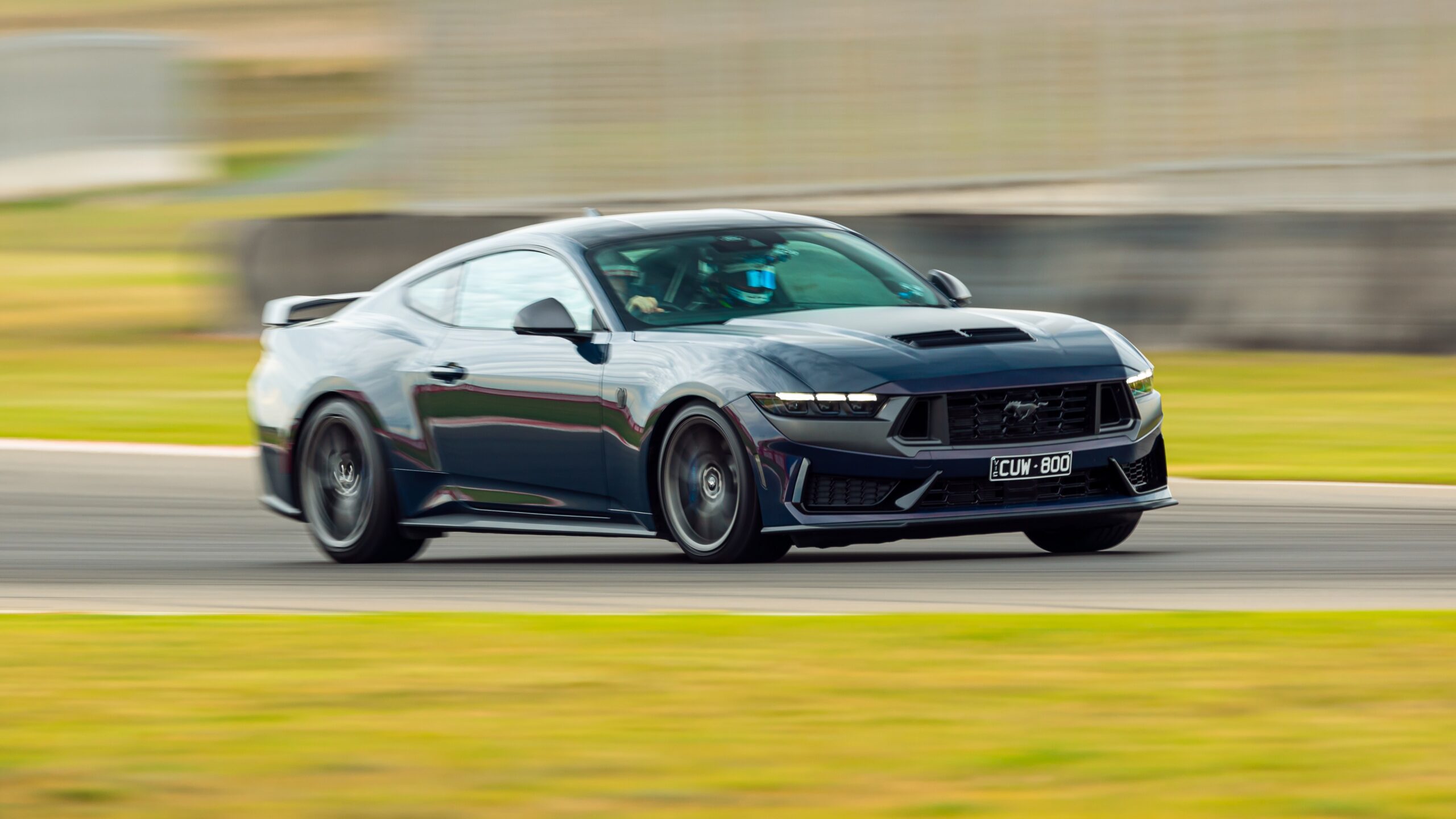
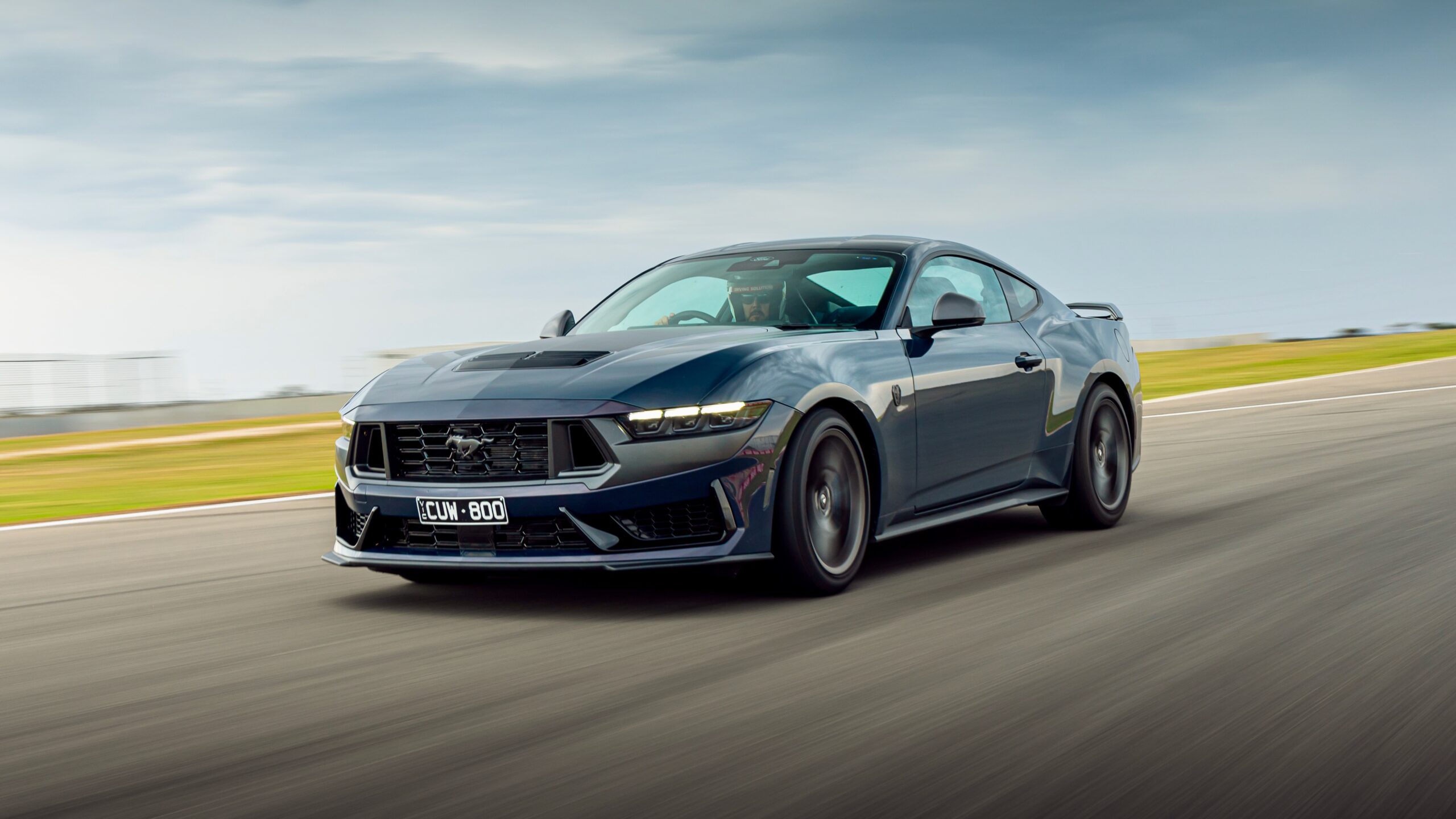


On track, both the GT and Dark Horse shone thanks to their keen dynamics, adjustable chassis and excellent balance. Reportedly, a reasonable amount of Mustang owners take their cars to the track and we think buyers of the new model will be more than satisfied with its ability to tackle corners and rocket out of them without fuss. For the first time in a positive light, words like ‘finesse’ have been added to the Mustang’s handling vocabulary and it’s an absolute riot to drive. We would like more steering feel, however.
If you plan to take your Mustang to the track, the Dark Horse is clearly the model to buy because it truly comes alive there. The adaptive dampers – plus more powerful brakes, Tremec manual gearbox, bigger rear sway bar and upgraded shocks – are standard equipment on the Dark Horse, and while the GT is already pretty good, those new parts make the Dark Horse even better. In particular are the revised manual gear ratios of the Dark Horse, which allow drivers to stay in third gear for lower-speed gears that second would be selected for in the GT, and that allows it to really rocket out of corners. The upgraded brakes are also a highlight with a sharp feel and a lot of stopping power that will impress.




Ford was also quite keen to show off the Mustang’s sliding ability on a skid pan, as well as the new track-only ‘drift brake’ functionality. Unlike the previous model, the S650 Mustang features an electronic parking brake but it actually looks like a regular manual handbrake – just a small press activates or deactivates it. Why it looks like that it does is because of the new drift brake functionality, which deactivates both the stability control and anti-lock brakes for the ultimate handbrake turn – at least, according to Ford. We had a lot of fun testing it out – it’s very quick to activate and allows for a clean pull away.
If you’re choosing between the transmissions, we say go the manual every time. The Tremec TR-3160 gearbox in the Dark Horse is great – the clutch is somewhat heavy to use, but every shift is quite satisfying and more so than the Getrag MT-82 unit in the GT. Away from the track, the Mustang’s grand touring ability is further aided by its well tuned active safety systems – in particular, the lane keeping assistance and adaptive cruise control are intuitive to use. Overall, from a driving perspective, there’s no doubt that the new Mustang is more well-rounded than ever before.
How practical is the 2025 Ford Mustang?
As you’d expect for a Mustang, the new model is quite comfortable and is an excellent grand tourer but it’s also had an increase in overall quality and tech integration that makes it feel far more modern than the previous model. Even though the bones are the same as the last model – the doors and centre console, for example, are largely identical – it feels like a different car thanks to higher quality materials and new switchgear.
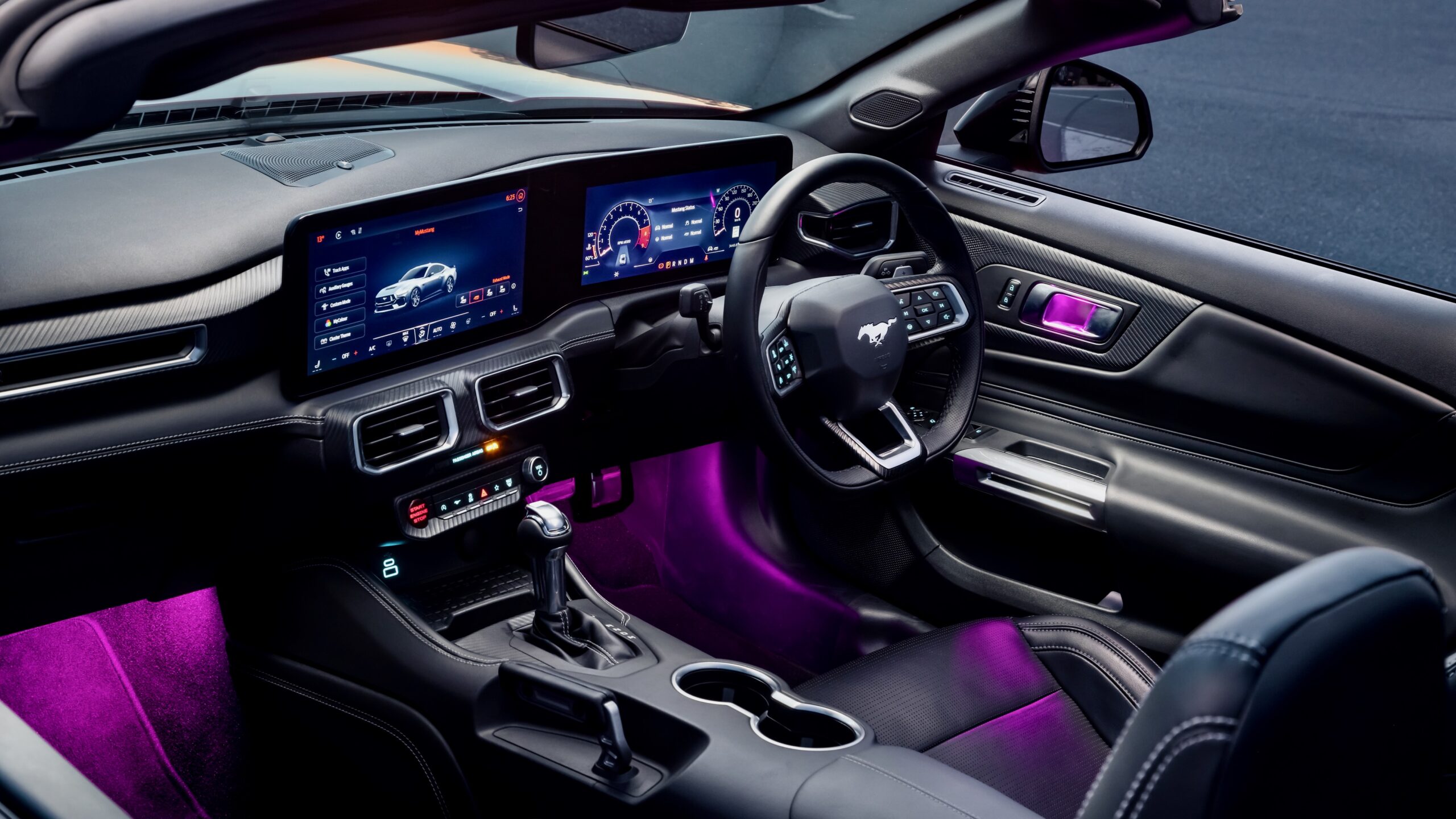
Overall quality inside the new Mustang is much improved thanks to soft touch materials on the door tops and dashboard, plus stitched leather-like trim on the centre console (which is great for resting your knee on) and dashboard fascia. The fake carbon fibre trim used around the gearbox, air vents and dashboard fascia is a bit naff, but otherwise, the material choices are a definite step up on the previous model. But even smaller detail changes like the new steering wheel buttons make the new model feel a lot more modern as well. What would improve it further, however, would be upholstery colours other than black – in the US, buyers can choose tan, navy blue, red and light grey upholstery options as well and we think that would lift the cabin of the Mustang even further.
As you’d expect for a coupe, the cabin of the new Mustang is not the most practical in the world. However, there’s more storage space inside than a GR Supra thanks to reasonable door bins, a tray underneath the dashboard with a wireless phone charger, a big glovebox, big cupholders in the centre console and a reasonable box underneath the centre armrest.




One of the best upgrades to the seventh-generation Mustang from the model it replaces is the addition of Ford’s latest ‘Sync 4’ infotainment system, which – unlike like the Ranger and its portrait screen – is presented horizontally in a 12.4-inch driver’s display/13.2-inch infotainment system set up. It’s well featured with an eSIM for live services, satellite navigation with live traffic, wireless smartphone mirroring and digital radio, plus it’s configurable through the car’s various modes and we think tech lovers will quite like that.
There are more treats for the Mustang faithful too, with configurable driver’s dials that can mimic a 60s classic model, a Fox Body or even an early 2000s SVT (though, they don’t feature digital speedos like the cars they’re mimicking). Plus, because the system features over-the-air updates, theoretically Ford can keep designing new versions and keep owners happy and keen to discover new features about their cars. The 12-speaker B&O sound system is not the last word in sound clarity, but will still please audiophiles thanks to its reasonable bass levels.


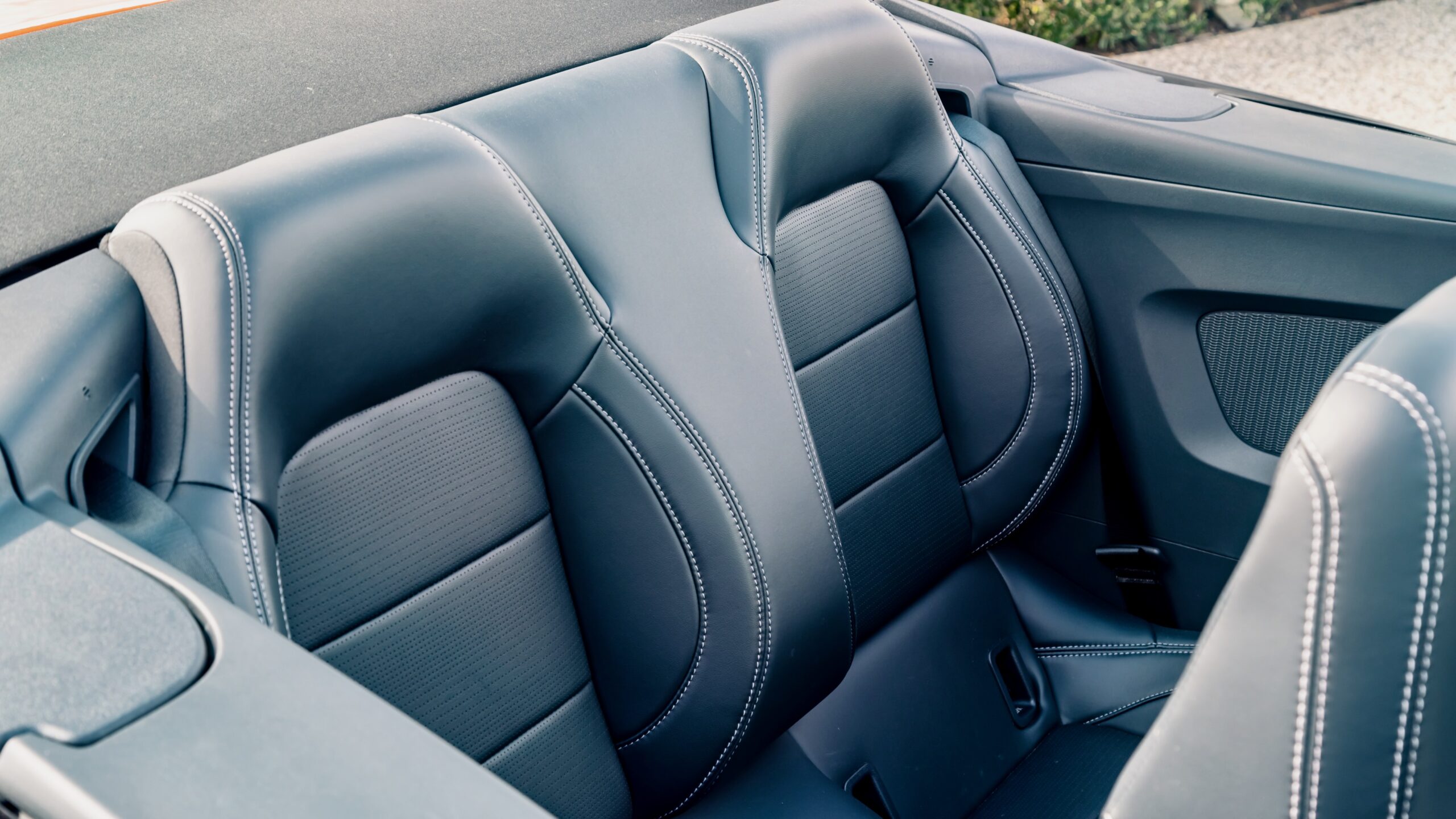

Seat comfort is great, with nicely bolstered units in the front that can be upgraded to excellent Recaros – we’d stick with the standard seats, however, as they’re more than supportive enough in harder driving. Moving to the rear seat of the Mustang shows that while it has rear seats – unlike the Supra and Z – they’re not that useful for humans. Two child seats will fit, however, thanks to two top-tether points and two ISOFIX points and if you need to open up the boot, the seats fold.
The boot of the Mustang measures 408-litres (coupe)/332-litres (convertible), which is quite big for the segment and can accomodate a few reasonable suitcases. Plus, it’s way more practical than both the Supra and Z. There are no clever features, however, and there isn’t a spare wheel either but a tyre repair kit instead.
How much does the 2025 Ford Mustang cost to service?
Like other new Ford products, the new Mustang is covered by a five-year/unlimited km warranty with up to seven years of roadside assistance. Five years/75,000km of servicing costs a pretty reasonable $1,931 ($386 per service).
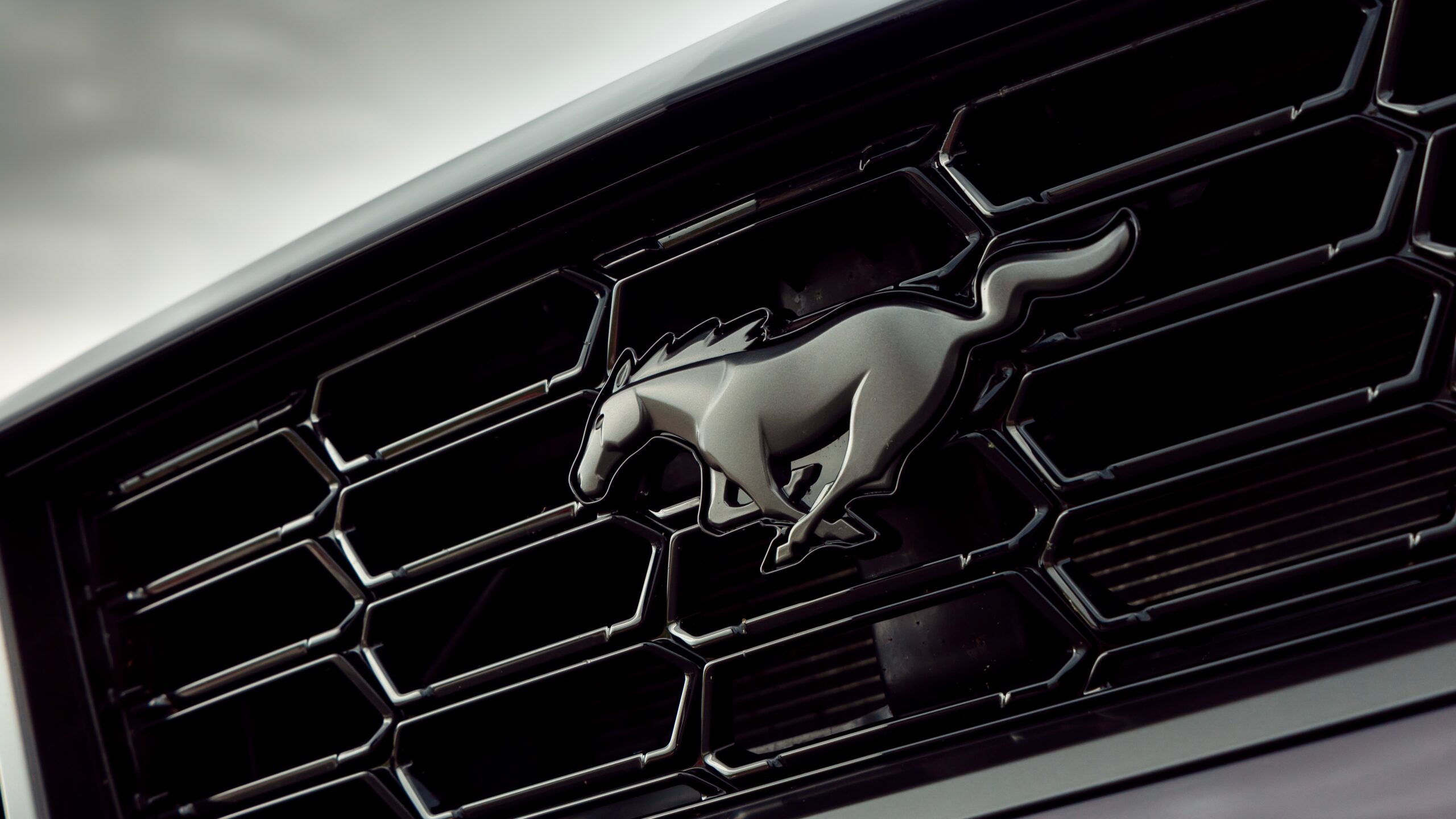
Both Toyota and Nissan also cover their products with five-year/unlimited km warranties – the Toyota offers no roadside assistance, while the Nissan is covered by five years from the get-go. Five years/75,000km of servicing the Supra costs $2,075 ($415 per year) and the Z costs $2,513 ($502 per year) over the same time period but only to 50,000km thanks to shorter intervals.
Should I buy a 2025 Ford Mustang?
If you’re in a position to and are after such a car, then yes you should absolutely buy a 2025 Ford Mustang before the opportunity is taken away from you. While Ford is committed to selling V8s as long as it possibly can around the world, there’s no doubt that impending emissions legislation in Australia in particular will make it both more expensive and more difficult to do so. And those who end up with one will absolutely love it because it’s rare to find a new car in 2024 with such an intoxicating mix of performance, grand touring ability, tech, relative practicality and – surprisingly for a Mustang – handling finesse. The sold-out Dark Horse is undoubtedly the highlight of the group, but the GT – as a manual with the adaptive dampers option box ticked – is also a great option.

Counting against the Mustang is that it’s now more expensive than before – choose a GT and you’re looking at around $90,000 to drive it out of the dealership – and also quite thirsty, as you’d expect for a V8. The Dark Horse is also already sold out with no concrete plans to sell another batch, while we also think that it should offer more colour and trim options to push the whole individualism idea further. But overall, there’s no doubt that the 2025 Ford Mustang is a worthy upgrade over the previous model, and if you’re after a sub-$100,000 sports car, we’d be test driving it first.

Leave a Reply